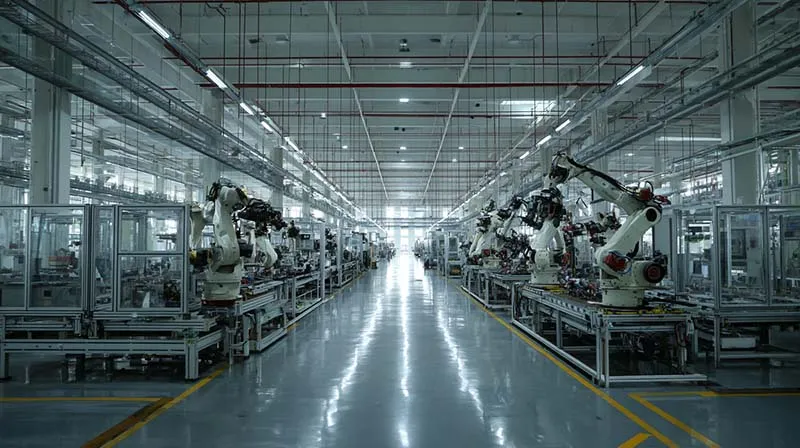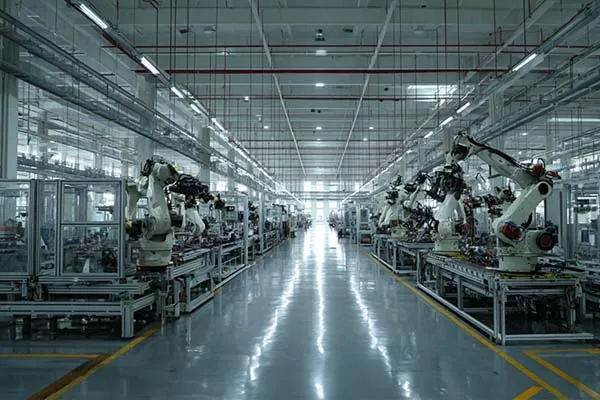IoT drives the global shift to smart manufacturing. In East China, a hub for industry, IoT powers predictive maintenance. Over 75% of projects succeed, leading the nation. This saves costs and boosts efficiency.

IoT and Predictive Maintenance: A Powerful Blend
IoT reshapes how factories maintain equipment. Predictive maintenance uses IoT sensors to monitor machines. AI and machine learning predict failures before they happen. Unlike old-school maintenance, this cuts downtime. Studies show unplanned downtime costs $260,000 per hour. IoT slashes this by 30%.
Key technologies make this possible:
- Smart Sensors: They track vibration, temperature, and pressure in real time.
- Edge Computing: Processes data on-site, speeding up responses.
- 5G/Wi-Fi 7: Ensures fast, reliable connections for many devices.
- Digital Twins: Virtual models simulate equipment to optimize upkeep.
- IIoT Platforms: Tools like Huawei’s OceanConnect unify data and systems.
Thus, IoT builds smarter, more efficient factories in East China.
East China’s Predictive Maintenance Success Stories
East China, home to Jiangsu, Shanghai, and Zhejiang, thrives in manufacturing. Its auto, electronics, and chemical industries shine. Strong policies and digital infrastructure fuel IoT success. Over 75% of predictive maintenance projects succeed here. Here are three examples:
1.Suzhou Auto Parts Maker
A Suzhou firm uses IoT sensors to monitor presses and welders. AI predicts failures with 92% accuracy. This cuts maintenance costs by 30%. Equipment lasts 10% longer. Jiangsu’s smart manufacturing funds and supply chain support drive this win.
2.Shanghai Chemical Plant
A Shanghai plant tracks pipelines with IoT sensors. Digital twins model equipment behavior. This predicts pump failures, cutting downtime by 40%. Using Alibaba’s IoT platform, the plant saves $3 million yearly. Equipment life extends by 15%.
3.Zhejiang Electronics Firm
A Zhejiang factory upgrades its SMT lines with IoT and 5G. Edge computing shortens fault prediction from a week to a day. Production efficiency rises 20%. East China’s strong IoT infrastructure makes this possible.
These cases show IoT’s power. Policy support and digital ecosystems in East China ensure success.
Market Outlook and Emerging Trends
East China’s IoT market grows fast. China’s smart manufacturing hit $600 billion in 2023. By 2027, it may reach $900 billion. East China could claim 40% of IoT predictive maintenance markets by 2025. Several trends shape this growth:
- AIoT Growth: AI plus IoT improves prediction accuracy. Deep learning refines maintenance schedules.
- 5G-A and Satellite: These expand IoT to remote factories. Coverage grows stronger.
- Low-Code Platforms: They make IoT affordable for small businesses.
- Green Manufacturing: IoT cuts energy waste, supporting China’s carbon goals.
Moreover, Huawei and Alibaba lead IoT innovation in East China. They offer tailored solutions. Universities and research hubs also train talent. This strengthens the region’s edge.
Challenges and Solutions
IoT faces hurdles in East China. First, data security risks rise. IoT attacks grew 30% globally in 2024. Second, systems often don’t work together. Third, talent shortages loom. China lacks 5 million AIoT experts. Solutions include:
- Boost Security: Use encryption and zero-trust systems.
- Standardize Systems: Adopt the Matter protocol for better compatibility.
- Train Talent: Partner with universities to build AIoT skills.
Looking ahead, East China can lead globally in predictive maintenance. IoT will drive this success.

